Samsung Confidential
S5K2L8SX
1/2.8" 12M CMOS Image Sensor
Revision 0.00
Aug 2017
Data Sheet
2017 Samsung Electronics Co., Ltd. All rights reserved.
avp-electronics / Jade.kim at 2017.08.10SAMSUNG Confidential�
Samsung Confidential
Important Notice
subsidiaries, affiliates, and distributors harmless against all
claims, costs, damages, expenses, and reasonable attorney
fees arising out of, either directly or indirectly, any claim
(including but not limited to personal injury or death) that
may be associated with such unintended, unauthorized
and/or illegal use.
WARNING No part of this publication may be reproduced,
stored in a retrieval system, or transmitted in any form or by
any means, electric or mechanical, by photocopying,
recording, or otherwise, without the prior written consent of
Samsung. This publication is intended for use by designated
recipients only. This publication contains confidential
information (including trade secrets) of Samsung protected
by Competition Law, Trade Secrets Protection Act and other
related laws, and therefore may not be, in part or in whole,
directly or indirectly publicized, distributed, photocopied or
used (including
Internet where
unspecified access is possible) by any unauthorized third
party. Samsung reserves its right to take any and all
measures both in equity and law available to it and claim full
damages against any party that misappropriates Samsung’s
trade secrets and/or confidential information.
in a posting on
the
警 告 本文件仅向经韩国三星电子株式会社授权的人
员提供,其内容含有商业秘密保护相关法规规定并受其
保护的三星电子株式会社商业秘密,任何直接或间接非
法向第三人披露、传播、复制或允许第三人使用该文件
全部或部分内容的行为(包括在互联网等公开媒介刊登
该商业秘密而可能导致不特定第三人获取相关信息的行
为)皆为法律严格禁止。此等违法行为一经发现,三星
电子株式会社有权根据相关法规对其采取法律措施,包
括但不限于提出损害赔偿请求。
Samsung Electronics Co. Ltd. (“Samsung”) reserves the
right to make changes to the information in this publication
at any time without prior notice. All information provided is
for
reference purpose only. Samsung assumes no
responsibility for possible errors or omissions, or for any
consequences resulting from the use of the information
contained herein.
This publication on its own does not convey any license,
either express or implied, relating to any Samsung and/or
third-party products, under the intellectual property rights of
Samsung and/or any third parties.
Samsung makes no warranty, representation, or guarantee
regarding the suitability of its products for any particular
purpose, nor does Samsung assume any liability arising out
of the application or use of any product or circuit and
specifically disclaims any and all liability, including without
limitation any consequential or incidental damages.
Customers are responsible for their own products and
applications. "Typical" parameters can and do vary in
different applications. All operating parameters, including
"Typicals" must be validated for each customer application
by the customer's technical experts.
Samsung products are not designed, intended, or authorized
for use in applications intended to support or sustain life, or
for any other application in which the failure of the Samsung
product could reasonably be expected to create a situation
where personal injury or death may occur. Customers
acknowledge and agree that they are solely responsible to
meet all other legal and regulatory requirements regarding
their applications using Samsung products notwithstanding
any information provided in this publication. Customer shall
indemnify and hold Samsung and its officers, employees,
Copyright 2017 Samsung Electronics Co., Ltd.
Samsung Electronics Co., Ltd.
San #24 Nongseo-Dong, Giheung-Gu
Yongin-City, Gyeonggi-Do, Korea 446-711
Contact Us: daeil.yu@samsung.com
Home Page: http://www.samsungsemi.com
avp-electronics / Jade.kim at 2017.08.10SAMSUNG Confidential�
Samsung Confidential
Trademarks
All brand names, trademarks and registered trademarks belong to their respective owners.
Exynos, S5K2L8SX, FlexOneNAND, and OneNAND are trademarks of Samsung Electronics.
ARM, Jazelle, TrustZone, and Thumb are registered trademarks of ARM Limited.
Cortex, ETM, ETB, Coresight, ISA, and Neon are trademarks of ARM Limited.
Java is a trademark of Sun Microsystems, Inc.
SD is a registered trademark of Toshiba Corporation.
MMC and eMMC are trademarks of MultiMediaCard Association.
JTAG is a registered trademark of JTAG Technologies, Inc.
Synopsys is a registered trademark of Synopsys, Inc.
I2S is a trademark of Phillips Electronics.
I2C is a trademark of Phillips Semiconductor Corp.
MIPI and Slimbus are registered trademarks of the Mobile Industry Processor Interface (MIPI) Alliance.
All other trademarks used in this publication are the property of their respective owners.
avp-electronics / Jade.kim at 2017.08.10SAMSUNG Confidential�
Samsung Confidential
Chip Handling Guide
Precaution against Electrostatic Discharge
When using semiconductor devices, ensure that the environment is protected against static electricity:
1. Wear antistatic clothes and use earth band.
2. All objects that are in direct contact with devices must be made up of materials that do not produce static
electricity.
3. Ensure that the equipment and work table are earthed.
4. Use ionizer to remove electron charge.
Contamination
Do not use semiconductor products in an environment exposed to dust or dirt adhesion.
Temperature/Humidity
Semiconductor devices are sensitive to:
Environment
Temperature
Humidity
High temperature or humidity deteriorates the characteristics of semiconductor devices. Therefore, do not store or
use semiconductor devices in such conditions.
Mechanical Shock
Do not to apply excessive mechanical shock or force on semiconductor devices.
Chemical
Do not expose semiconductor devices to chemicals because exposure to chemicals leads to reactions that
deteriorate the characteristics of the devices.
Light Protection
In non- Epoxy Molding Compound (EMC) package, do not expose semiconductor IC to bright light. Exposure to
bright light causes malfunctioning of the devices. However, a few special products that utilize light or with security
functions are exempted from this guide.
Radioactive, Cosmic and X-ray
Radioactive substances, cosmic ray, or X-ray may influence semiconductor devices. These substances or rays
may cause a soft error during a device operation. Therefore, ensure to shield the semiconductor devices under
environment that may be exposed to radioactive substances, cosmic ray, or X-ray.
EMS (Electromagnetic Susceptibility)
Strong electromagnetic wave or magnetic field may affect the characteristic of semiconductor devices during the
operation under insufficient PCB circuit design for Electromagnetic Susceptibility (EMS).
avp-electronics / Jade.kim at 2017.08.10SAMSUNG Confidential�
Revision History
Revision No.
Date
Description
0.00
Aug 2017
Initial draft
Samsung Confidential
Author(s)
Shachaf Amir
Oren
Reinherz
YB Kim
MH Jang
avp-electronics / Jade.kim at 2017.08.10SAMSUNG Confidential�
Samsung Confidential
Table of Contents
1 PRODUCT OVERVIEW .................................................................................. 11
1.1 Introduction ................................................................................................................................................ 11
1.2 Features ..................................................................................................................................................... 12
2 PAD CONFIGURATION ................................................................................. 13
2.1 Pad Description .......................................................................................................................................... 14
2.2 Application Circuit ...................................................................................................................................... 18
2.3 Pixel Array Information ............................................................................................................................... 19
3 POWER SEQUENCE...................................................................................... 20
3.1 Operating Modes........................................................................................................................................ 20
3.2 Power-Up Sequence .................................................................................................................................. 22
3.3 Power-Down Sequence ............................................................................................................................. 24
3.4 Software Standby Mode Sequence ........................................................................................................... 26
3.5 Hibernation Mode ....................................................................................................................................... 26
4 CONTROL INTERFACE ................................................................................. 27
4.1 Camera Control Interface (CCI) ................................................................................................................. 28
4.2 SPI Control Interface .................................................................................................................................. 34
4.2.1 SPI Timing Definitions ........................................................................................................................ 35
4.2.2 SPI Sequences ................................................................................................................................... 37
4.2.3 Master SPI Control Interface .............................................................................................................. 37
5 FUNCTIONAL FEATURES ............................................................................. 38
5.1 Block Diagram ............................................................................................................................................ 38
5.2 Pixel Array Addresses ................................................................................................................................ 40
5.3 Horizontal Mirror and Vertical Flip.............................................................................................................. 41
5.4 Averaged Sub-Sampled Readout .............................................................................................................. 42
5.5 Frame Rate Control ................................................................................................................................... 43
5.5.1 Integration Time Control (Electronic Shutter Control) ........................................................................ 43
5.5.2 Functional Operation Modes .............................................................................................................. 44
5.6 PLL and Clock Generator .......................................................................................................................... 45
5.6.1 Clock Relationships ............................................................................................................................ 46
5.6.2 Master Clock Waveform Diagram ....................................................................................................... 48
5.7 Gain Control ............................................................................................................................................... 49
5.7.1 Analog Gain Control ........................................................................................................................... 49
5.7.2 Digital Gain Control............................................................................................................................. 49
5.8 Embedded Line .......................................................................................................................................... 50
5.9 Wide Dynamic Range (WDR) Support ...................................................................................................... 50
5.10 NVM OTP Memory ................................................................................................................................... 50
5.11 Dual camera input Sync ........................................................................................................................... 51
5.12 Test Pattern .............................................................................................................................................. 52
5.13 Output Data Interface ............................................................................................................................... 52
6 ELECTRICAL CHARACTERISTICS............................................................... 53
avp-electronics / Jade.kim at 2017.08.10SAMSUNG Confidential�
Samsung Confidential
6.1 Absolute Maximum Rating ......................................................................................................................... 53
6.2 Operating Conditions ................................................................................................................................. 54
6.3 DC Characteristics ..................................................................................................................................... 55
6.4 AC Characteristics ..................................................................................................................................... 55
7 LENS SPECIFICATION (CRA: CHIEF RAY ANGLE SPEC.) ......................... 56
7.1 Target CRA ................................................................................................................................................ 56
7.2 Pixel-Shading Characteristics .................................................................................................................... 57
7.3 Spectral Response ..................................................................................................................................... 58
7.4 IR-cut Filter Selection ................................................................................................................................. 59
8 REGISTER DESCRIPTION ............................................................................ 60
8.1 Configuration Register ............................................................................................................................... 60
avp-electronics / Jade.kim at 2017.08.10SAMSUNG Confidential�
Samsung Confidential
List of Figures
Title
Page
Number
Figure
Number
Figure 1 Chip Dimension Top View ...................................................................................................................... 13
Figure 2 Module Application Circuit Top View ..................................................................................................... 18
Figure 3 Pixel Array Information ........................................................................................................................... 19
Figure 4 System State Diagram ........................................................................................................................... 20
Figure 5 Power-Up Sequence .............................................................................................................................. 22
Figure 6 Power-Down Sequence ......................................................................................................................... 24
Figure 7 CCI Timing ............................................................................................................................................. 28
Figure 8 CCI Write Timing Example ..................................................................................................................... 30
Figure 9 CCI Read Timing Example .................................................................................................................... 31
Figure 10 CCI Read Multiple Timing Example ..................................................................................................... 32
Figure 11 SPI Control Interface ............................................................................................................................ 34
Figure 12 SPI Write Timing Diagram Mode 11 .................................................................................................... 35
Figure 13 SPI Read Timing Diagram Mode 11 .................................................................................................... 35
Figure 14 SPI Write/Read Mode 00 ..................................................................................................................... 36
Figure 15 SPI WRITE Sequence (1 Cycle) .......................................................................................................... 37
Figure 16 SPI Read .............................................................................................................................................. 37
Figure 17 Function Block Diagram ....................................................................................................................... 38
Figure 18 Window of Interest on Pixel Array ........................................................................................................ 40
Figure 19 Object, Sensor and displayed image in Standard Readout ................................................................. 41
Figure 20 Four readout orders and displayed images ......................................................................................... 41
Figure 21 Example of 2 by 2 Averaged sub-sampled readout ............................................................................. 42
Figure 22 Virtual Frame Format Example ............................................................................................................ 43
Figure 23 Clock System Block Diagram ............................................................................................................... 45
Figure 24 Clock Relationships ............................................................................................................................. 46
Figure 25 PLL Frequency Synthesis .................................................................................................................... 46
Figure 26 Master Clock Waveform Diagram ........................................................................................................ 48
Figure 27 Dual sensor sync system ..................................................................................................................... 51
Figure 28 Target CRA .......................................................................................................................................... 56
Figure 29 Shading Characteristics of Green ........................................................................................................ 57
Figure 30 Shading Characteristics of Color ratio ................................................................................................. 57
Figure 31 Spectral Response ............................................................................................................................... 58
Figure 32 IR Response of Blue channel .............................................................................................................. 59
avp-electronics / Jade.kim at 2017.08.10SAMSUNG Confidential�
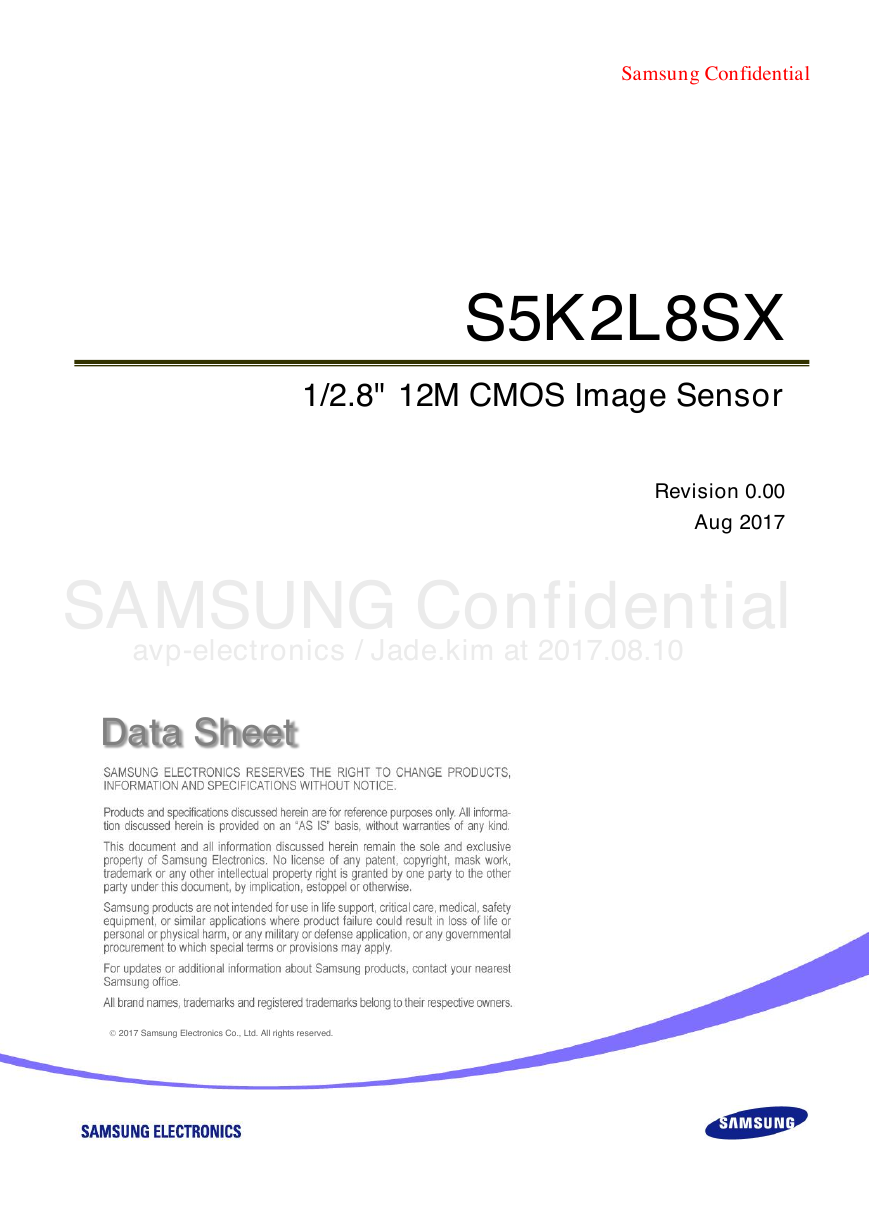
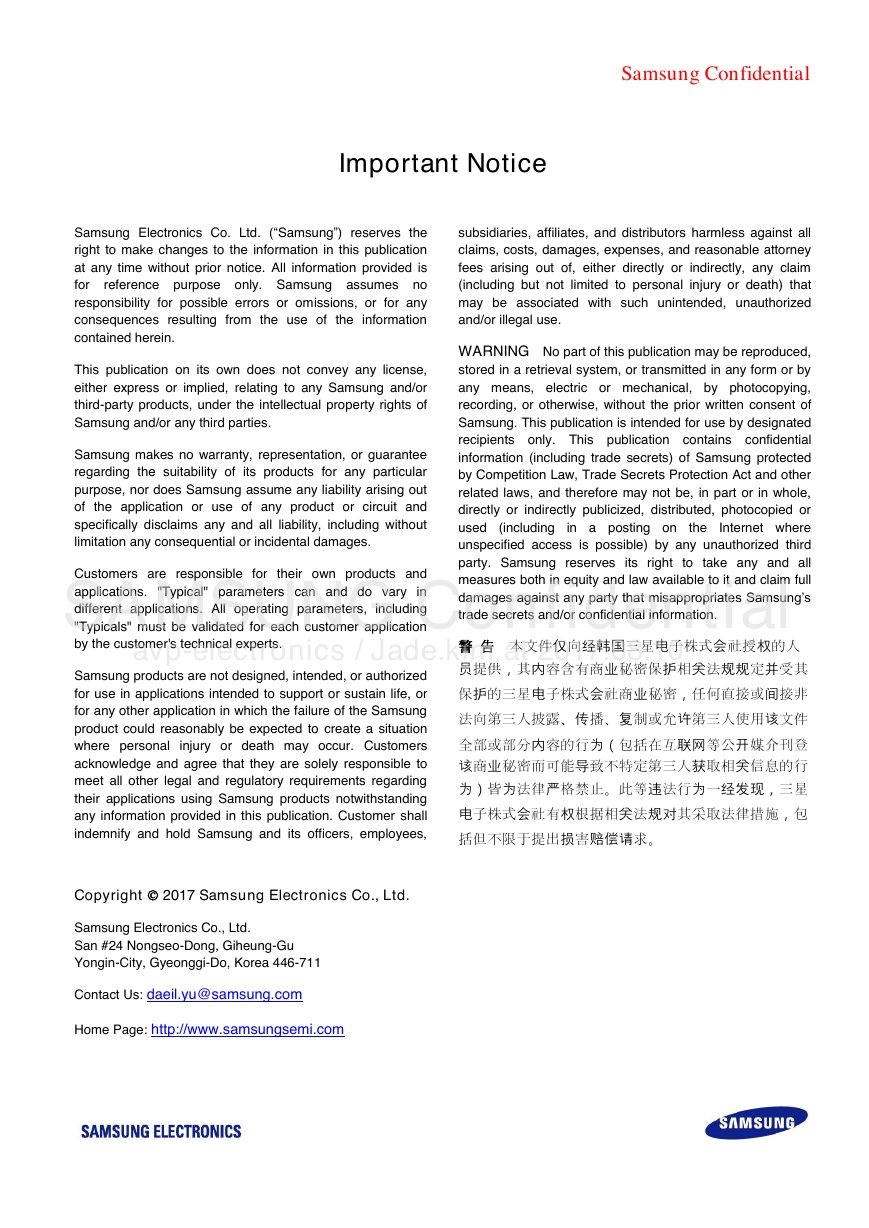
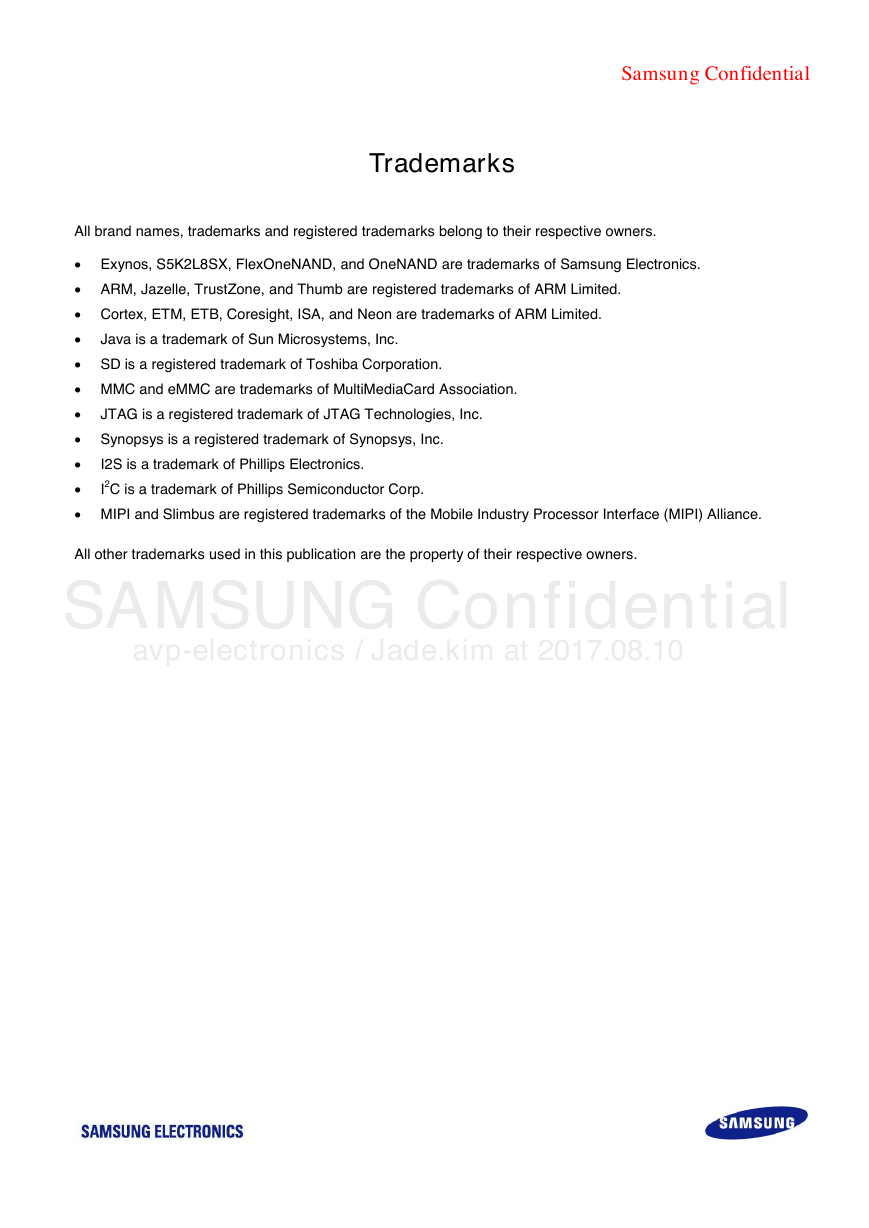
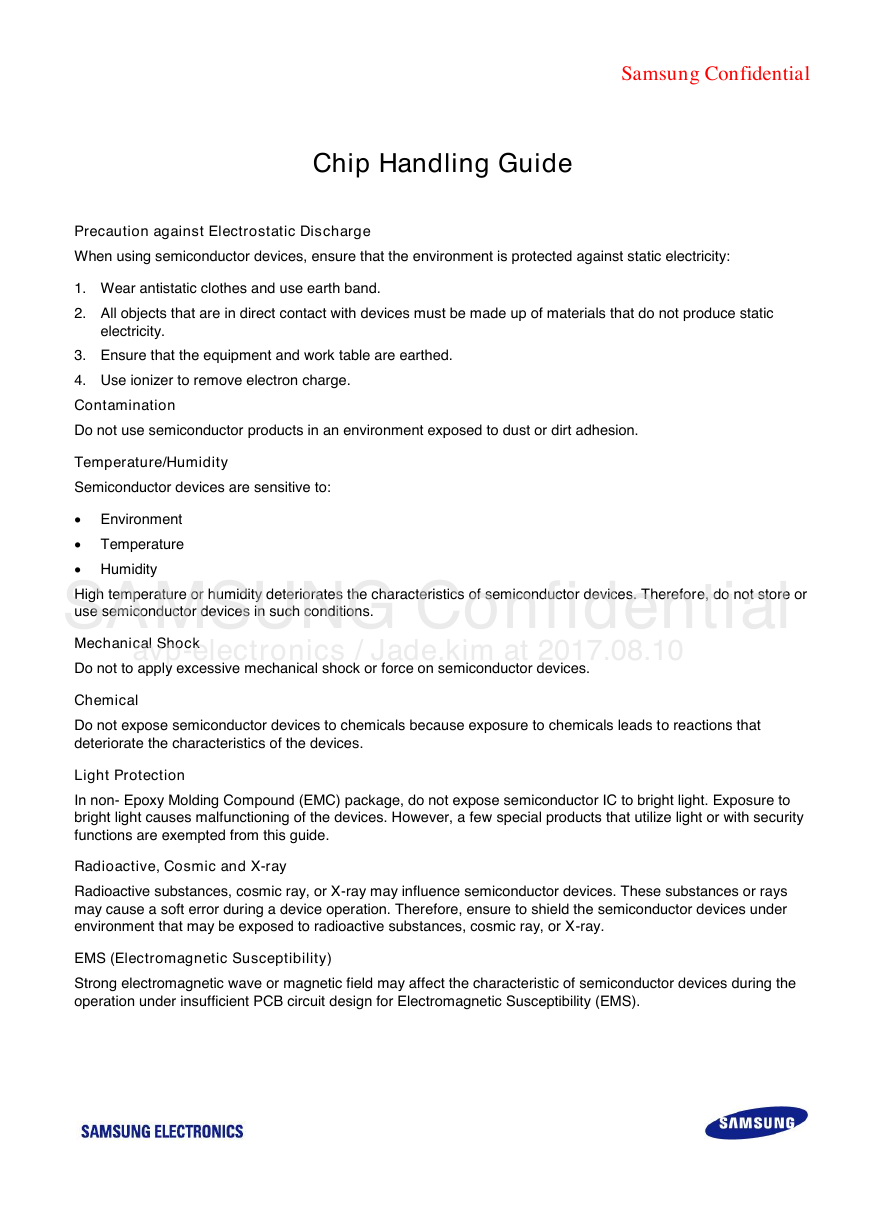
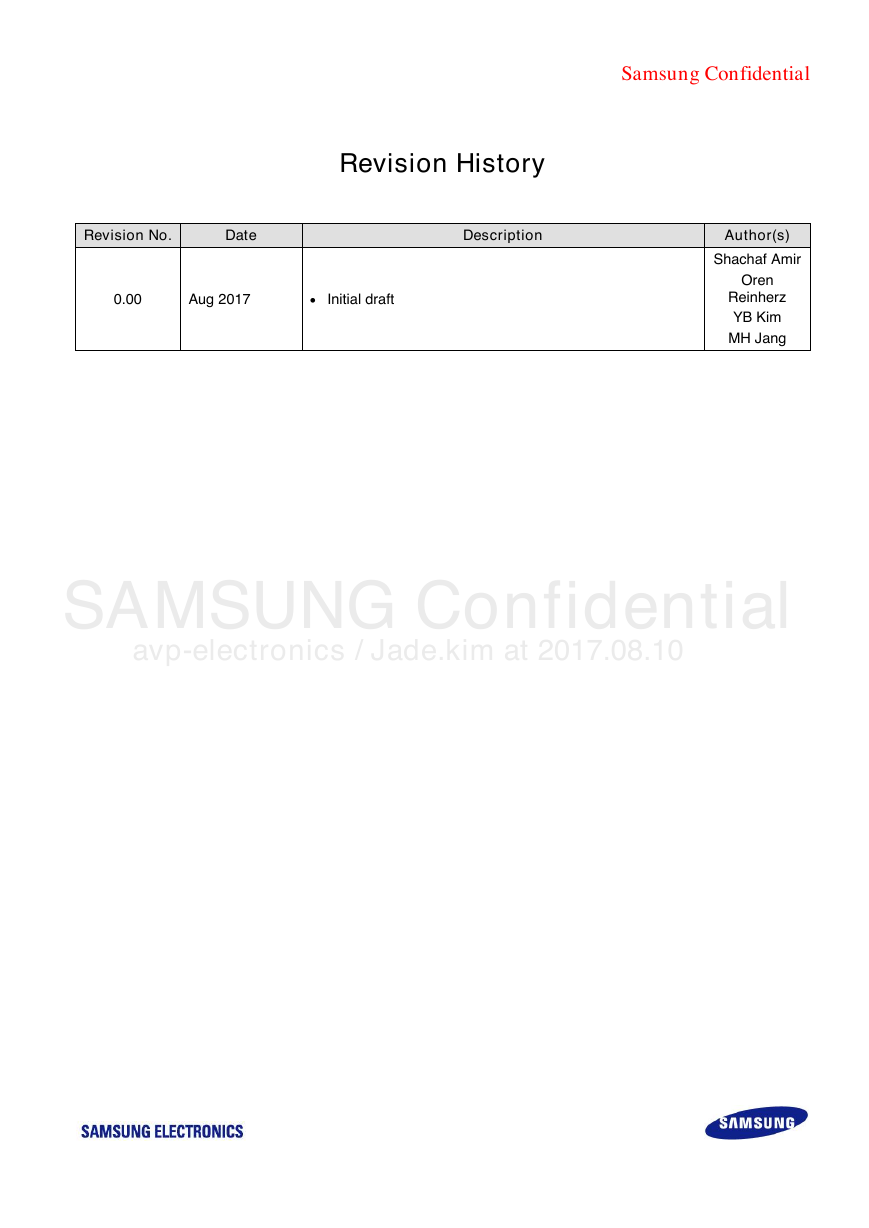
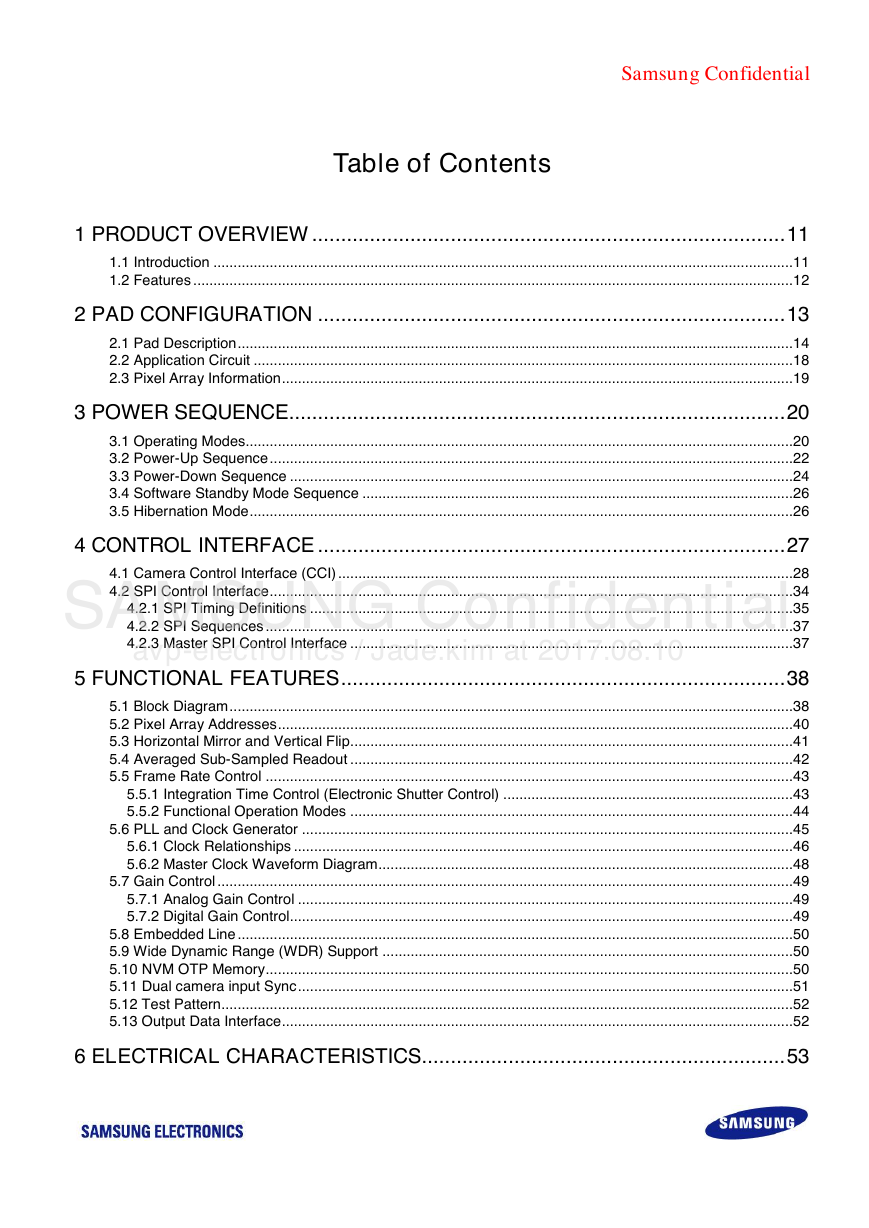
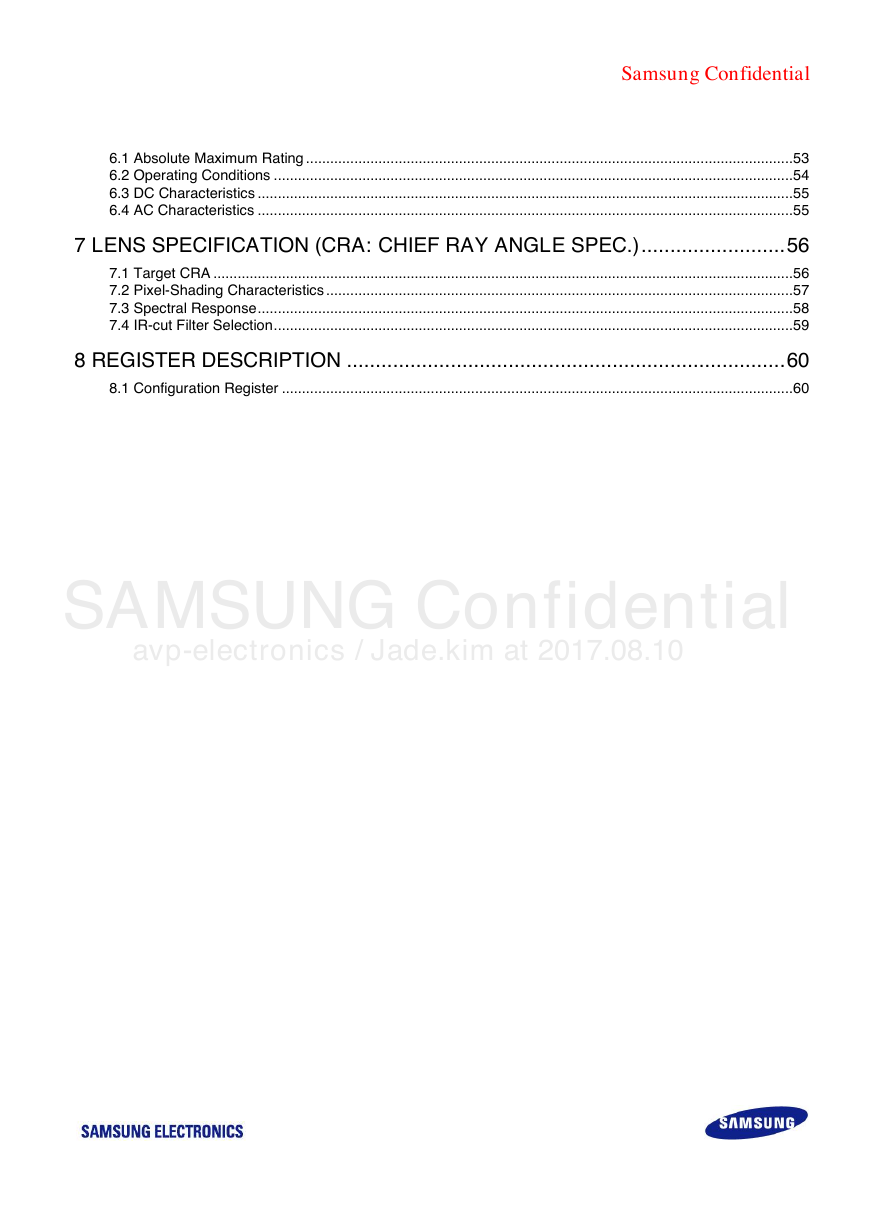
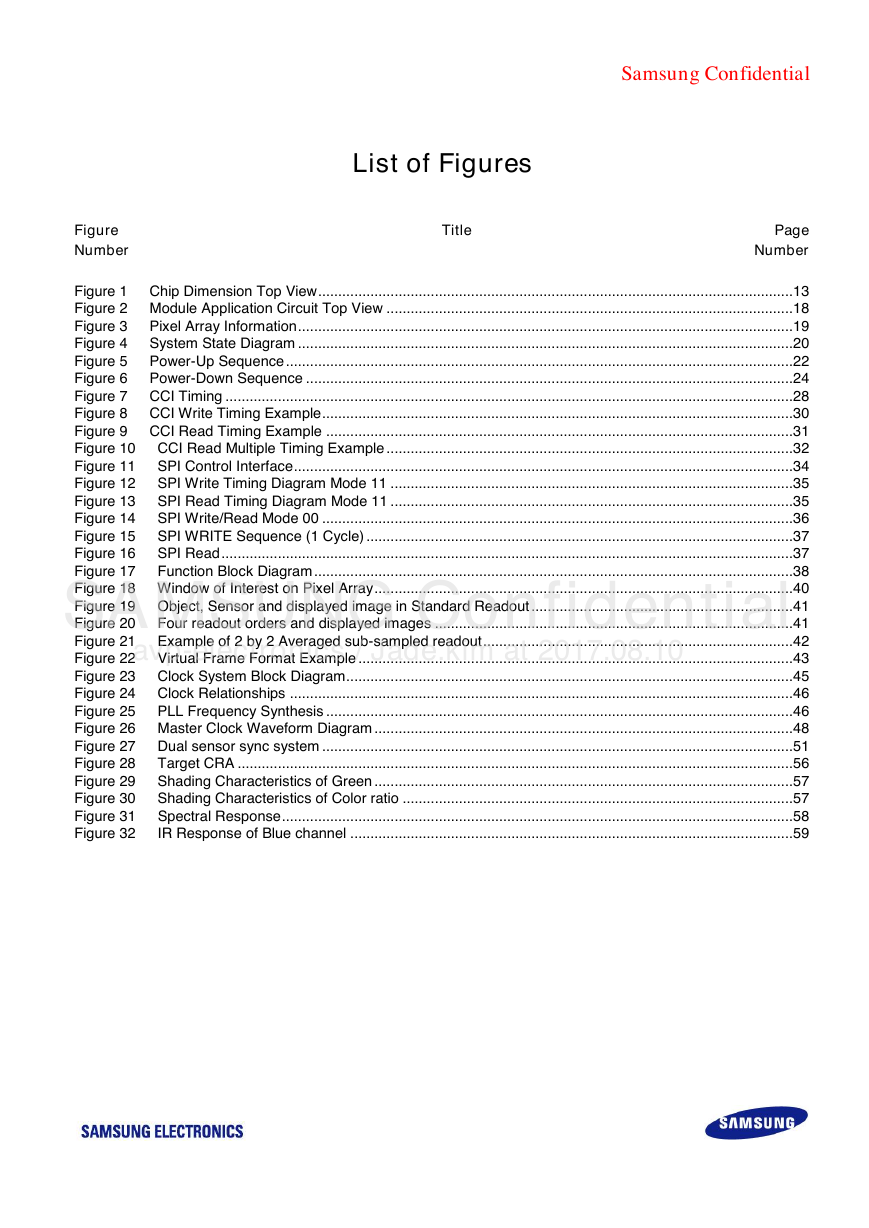








 2023年江西萍乡中考道德与法治真题及答案.doc
2023年江西萍乡中考道德与法治真题及答案.doc 2012年重庆南川中考生物真题及答案.doc
2012年重庆南川中考生物真题及答案.doc 2013年江西师范大学地理学综合及文艺理论基础考研真题.doc
2013年江西师范大学地理学综合及文艺理论基础考研真题.doc 2020年四川甘孜小升初语文真题及答案I卷.doc
2020年四川甘孜小升初语文真题及答案I卷.doc 2020年注册岩土工程师专业基础考试真题及答案.doc
2020年注册岩土工程师专业基础考试真题及答案.doc 2023-2024学年福建省厦门市九年级上学期数学月考试题及答案.doc
2023-2024学年福建省厦门市九年级上学期数学月考试题及答案.doc 2021-2022学年辽宁省沈阳市大东区九年级上学期语文期末试题及答案.doc
2021-2022学年辽宁省沈阳市大东区九年级上学期语文期末试题及答案.doc 2022-2023学年北京东城区初三第一学期物理期末试卷及答案.doc
2022-2023学年北京东城区初三第一学期物理期末试卷及答案.doc 2018上半年江西教师资格初中地理学科知识与教学能力真题及答案.doc
2018上半年江西教师资格初中地理学科知识与教学能力真题及答案.doc 2012年河北国家公务员申论考试真题及答案-省级.doc
2012年河北国家公务员申论考试真题及答案-省级.doc 2020-2021学年江苏省扬州市江都区邵樊片九年级上学期数学第一次质量检测试题及答案.doc
2020-2021学年江苏省扬州市江都区邵樊片九年级上学期数学第一次质量检测试题及答案.doc 2022下半年黑龙江教师资格证中学综合素质真题及答案.doc
2022下半年黑龙江教师资格证中学综合素质真题及答案.doc